LumiQuest Softbox LTp is a recently released off-camera flash accessory for photographers on the go. The new softbox is larger than any other modifier LumiQuest created so far. As you would expect from any LumiQuest accessory, Softbox LTp is made up to the high quality standards, and it is very likely you will see years of service from this flash light accessory.
LTp stands for "laptop", so there is no surprise this softbox has the dimensions of a typical laptop with 17" (43 cm) display: 10" x 14" (25 cm x 36 cm). The softbox folds flat, but depending on a gear bag you use, it may or may not fit into it. If your bag features a laptop pocket, you can put Softbox LTp there along with your computer. If not, you can, of course, always carry the softbox separate from your main gear.
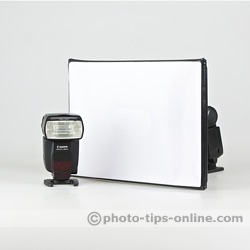 |
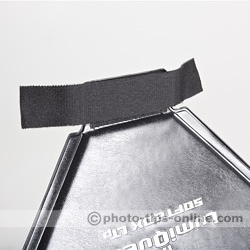 |
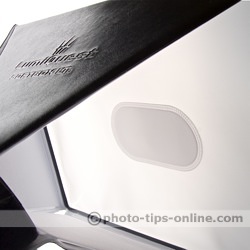 |
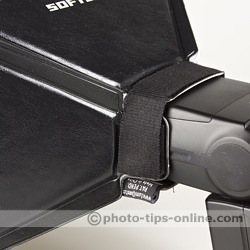 |
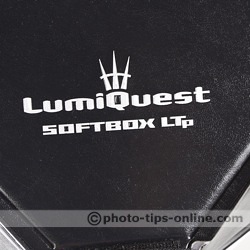 |
The design of Softbox LTp is very similar to other LumiQuest softboxes. In fact, the LTp unit is simply an enlarged version of LumiQuest Softbox III with slightly different proportions: 10"x14" (LTp) vs. 8"x9" (III). The attachment is identical to the one of Softbox III: four tabs attach to the Velcro pads or Velcro strap on the flash head and an additional strap goes around the tabs fixing the unit in place. Regardless of whether you use the self-adhesive Velcro pads included with the softbox or a separately purchased Velcro strap (like LumiQuest Ultra Strap or Honl Photo Speed Strap, for example), LumiQuest Softbox LTp sits on the flash securely without much wobbling or risk to fall off.
While LumiQuest Softbox LTp is designed for off-camera tasks, in some cases, it is possible to use it on-camera, as well. It will, however, fully block the auto-focus assist feature of your flash (so focusing in dim light conditions might be a problem). Also, with smaller flashes and wide angle lenses, it may even get into the frame. Nevertheless, using Softbox LTp on-camera may still be an option if it is something you're interested in.
The images below show LumiQuest Softbox LTp side by side with several other diffusers. You can see that Softbox LTp is about 4 times larger than LumiQuest Softbox (original), about 2 times larger than LumiQuest Softbox III, and about 40 percent larger than Speedlight Pro Kit 6 diffuser (right image).
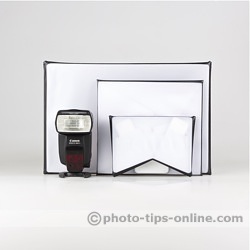 |
 |
Since the flash is shooting directly through the front screen of LumiQuest Softbox LTp, it is important to pay attention to the zoom setting of your flash. (Please refer to our LumiQuest Softbox III test article for more details.) For Softbox LTp, we recommend switching to manual zoom mode and using the widest possible flash zoom setting of your flash gun (including pull-out wide angle diffuser if your flash has one). Doing so helps you illuminate the front screen of the softbox more evenly creating a larger and, therefore, softer light source.
The size of Softbox LTp makes it suitable for various types of portrait photography. It is even usable for full length shots. For macro and tabletop setups, some photographers would probably consider Softbox LTp to be too big and bulky, while others, however, would be able to make a good use of it for these kinds of application.
The following portrait test images show the difference between the direct flash and LumiQuest Softbox LTp (at 14mm flash zoom). The flash is set to the camera's left and about 3 feet from the subject. The exposure is controlled by TTL.
 |
 |
Please note that the wide-angle panel cuts down the flash output quite significantly, but it is the best way to use LumiQuest Softbox LTp. According to our measurements, the light loss of the LTp diffuser, when used with a wide-angle panel, is around 2 stops, compared to direct flash set to 50mm zoom.
Below, there is an example of outdoor use of LumiQuest Softbox LTp. The softbox was positioned relatively close to the camera (to the left) about 3 feet from the snow shoes. The sunlight was coming from the camera's left side.
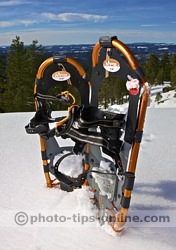 |
The last image is and example of tabletop photography. The softbox was about 1 feet (30cm) above the tulips. A second unmodified flash was added from the camera's right firing from the level of the pot. Notice the nice very soft shadow on the table produced by the softbox.
 |
In conclusion, LumiQuest Softbox LTp is a high-quality portable diffuser for off-camera applications. It creates a light source that is large enough to be successfully used for portraiture and some tabletop and macro applications. It folds flat and can be carried around in the laptop pocket of your gear bag. The best light quality with LumiQuest Softbox LTp can be achieved by setting the flash to its widest zoom value.